Spotlight
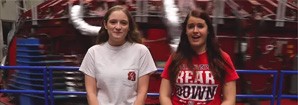
"Active Galactic Videos" Mirror Lab Video Hits 250,000 Views
An "Active Galactic Videos" episode (link to AGV Youtube channel at left), about the Mirror Lab and GMT, was picked up by the Tom Scott Channel on Youtube. Tom Scott's channel has over a million subscribers. This particular video, overseen by Professor Chris Impey and featuring Steward undergrad majors Jenny Calahan and Melissa Fae Thomas, has reached 250,000 views as of January 3. You can watch it HERE. [The Active Galactic Video team introduces itself: "We are a student-run channel based at Steward Observatory at the University of Arizona. Working under the supervision of Chris Impey, we create educational videos about astronomy and the space science community at the U of A and throughout Southern Arizona."]
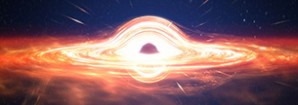
Özel and Lauer Discuss Their Work on the NOVA Show "Black Hole Apocalypse"
Just in time for the winter American Astronomical Society meeting, PBS is showing (Weds, Jan 10, at 8pm MST on KUAT here in Tucson) a 2-hour show about black holes entitled "Black Hole Apocalypse." Mikalya Mace of the Arizona Daily star has written a nice article HERE. Two of the scientific cast are Dr Tod Lauer of NOAO, a member of the original HST "Nuker" team that showed that supermassive black holes were ubiquitous in large galaxies, and Steward Professor Feryal Özel, a member of the "Event Horizon Telescope" team aiming to make a high resolution (comparable to the size of the Event Horizon) radio snapshot of the supermassive black hole at the center of the Milky Way. You can read updates and information on the EHT (data have arrived from Antarctica!) HERE and HERE. Another very good article is found HERE.
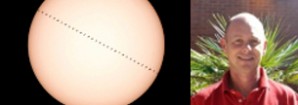
Alan Strauss Photographs the ISS Transiting the Sun
On January 1, Alan Strauss of Mt Lemmon Sky Center welcomed the new year by catching a transit of the ISS in front of the Sun. Mikayla Mace of the Arizona Daily Star has a nice writeup about this photo and about outreach from Himmel Park. You can find it HERE. You can also see a CNN story HERE.
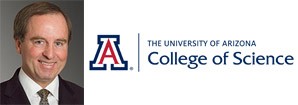
Arizona Astronomy Board Chairman Sid Leach to Receive UA Honorary Degree
NOTE: this event has ended, BUT you can watch it, tape delayed, at the link below.
The College of Science will bestow a Doctor of Science, Honoris Causa, on Sid Leach on Friday, December 15, 2017. The event will be live streamed from 9-11:00 am MST. THIS LINK will take you to the streaming page.
Sid Leach has served as chair of the Arizona Astronomy Board (AAB) for the last fourteen years. His tenure as chair has included many department milestones and the transition in leadership of Steward Observatory in 2012 from Peter Strittmatter, who served as director for 37 years, to Buell Jannuzi. Sid has presided over the AAB during the most rapid phase of philanthropic development for Steward Observatory, including the $20 million gift from Richard F. Caris in support of the UA participation in the Giant Magellan Telescope Organization.
Sid’s own passion for astronomy is demonstrated through his strong engagement with Steward Observatory and his exceptional astrophotography (viewable HERE).
We are grateful for his leadership and service on behalf of the Department of Astronomy, the Richard F. Caris Mirror Lab, Steward Observatory, and the College of Science.
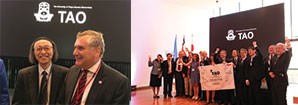
Laying of the First Stone for the Tokyo Atacama Observatory 6.5m Telescope
The Tokyo Atacama Observatory (TAO) Project celebrated the laying of the first stone (a Chilean tradition similar to a ground breaking ceremony) on November 22. The TAO project is building an infrared-optimized telescope with a 6.5m diameter aperture on the summit of Cerro Chajnantor, near the town of San Pedro de Atacama (and near ALMA) in northern Chile. Steward Observatory is making the primary, secondary, and tertiary elements for this telescope. Steward Director Dr. Buell Jannuzi was in Chile, gave remarks, and read remarks by Steward Emeritus Director Dr. Peter Strittmatter. We have three photos of the event in Santiago: FIRST, a photo of TAO Project Director Yuzuru Yoshii, University of Tokyo and University of Arizona, and Professor Mario Hamuy of the University of Chile. Mario is a UA Alum (PhD 2001) and currently the President of CONICYT, the Chilean government’s scientific research agency. SECOND, the speakers and some of the participants in the “Laying of the First Stone” Ceremony for the Tokyo Atacama Observatory, November 22, 2017, in Santiago, Chile. THIRD, the TAO flag with signatures and good wishes from the assembled celebrants. (all photos courtesy TAO).
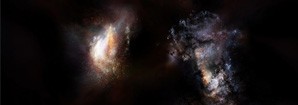
Most Massive Galaxy in the Early Universe Shown as it Assembles
A group of astronomers led by Steward Observatory's Dr. Daniel Marrone has found a titanic clash of galaxies in the infant universe (Steward collaborators include Marrone, former Steward grad student Justin Spilker (PhD 2017), and current grad students Katrina Litke and Mengtao Tang). The galaxies, observed when the universe was only 780 million years old, were originally discovered using the NSF's South Pole Telescope, with exquisite high-resolution observations made later with the ALMA array of radio telescopes in the Atacama Desert of Chile. The observations reveal the presence of two galaxies, separated by just 25,000 light years, in the process of merging to form one ultra-massive galaxy. The larger of the two galaxies experiences a phenomenon called gravitational lensing, which distorts and magnifies the light from the massive galaxy around a foreground galaxy aligned almost perfectly along our sightline from earth. After using sophisticated computer models to account for this lensing effect, the researchers were able to reconstruct what the galaxy would look like if the foreground galaxy wasn't there. The observations show that the two galaxies were forming stars thousands of times faster than our own Milky Way does today, and contain about 300 billion times the mass of our own sun in gas, which fuels the formation of new stars. Together, the pair make up the most massive known system at such an early point in the history of the universe, and is about as massive as any galaxy should be at such early times given our understanding of how galaxies form. (The image on this page is an artist's conception.)
You can read the UA News article HERE.
Pages

For Public
Public events include our Monday Night Lecture Series, world-reknowned Astronomy Camp and Mt Lemmon Sky Center.

For Students
A good place to start if you want to become an undergrad major or grad student, or need to find our schedule of classes.

For Scientists
Find telescopes and instruments, telescope time applications, staff and mountain contacts, and faculty and staff scientific interests.




